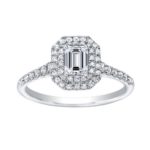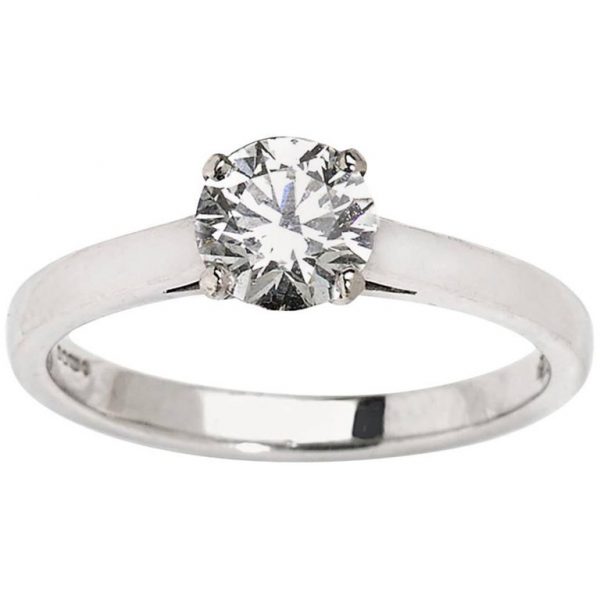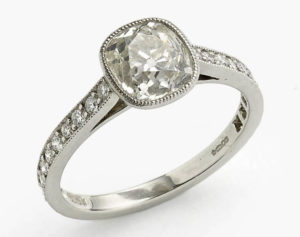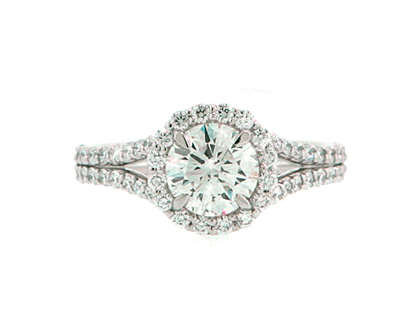What to look for when buying an engagement ring.
First of all, an engagement ring is for a lifetime so you want to make sure you are getting the right ring.
Top tips for buying an engagement ring:
- How much should I spend?
- Should I surprise them?
- How to know their finger size?
- Should I shop around?
- What type of setting should I choose
- Why are diamonds the most popular stones for engagement rings?
- What is the difference in terms of a diamond grading?
- Should I buy a diamond that only has a diamond certificate?
1. How much should I spend?
So there’s an old wives tale that it’s two months salary, but of course the most important factor is how much can you afford.
You want it to be a ring that she loves and it’s going to be a big investment for you, however small or large your budget is and we can help you source one if you can’t find the exact thing you are looking for or budget on Jewellery Discovery.
2. Should I surprise them?
Surprise is the best, of course, the shock on their face will be moment you will never forget.
But this can be quite scary if you don’t know what style type to go for.
JD’s Tips:
- Ask a close friend or family member if they have hinted to them what style they like
- Take a close look at the type of jewellery they already have and wear – the style can sometimes help decide if they would want a small delicate ring or something more showy
- Most of the time we would suggest diamond as the main stone mainly because of its durability but it is now becoming popular for other colours to be the main stone. We would only recommend sapphire or ruby as the second best sapphires coming in most colours, blue, yellow, pink as other stones like emeralds are not very durable and we have seen clients wearing these every day and now the emerald is cracked or chipped.
3. How to Know their Finger size?
- Ring size is not normally a problem as most rings can be resized unless it’s a full eternity which would need to be made to order. But you could borrow an exciting ring to gauge the size
4. Should I Shop Around?
 Get to know what is out on the market, compare prices and styles.
Get to know what is out on the market, compare prices and styles.
Here at Jewellery Discovery you can compare lots of different jewellers items in once place.
View the diamond engagement rings
5. What type of setting should I choose?
The setting of the diamond can be a very personal taste but also practicality comes in to it as well. We have clients that work in hospitals and don’t want a high setting or claws that could catch, so a rub over setting is the most practical. On the other hand, we have clients that want a ring that will stand out in a crowd and be very eye catching, so a high claw setting would be best.
Here’s a few examples of the most popular settings:
-
- Claw setting: This is where a diamond is held in place with four to eight claws — narrow tips of metal around the stone. The most popular amount of claws is four. This type of setting normally allows the diamond to have the most amount of light reflecting through the stone thus making the diamond engagement ring more sparkly.
 2. Rub-over setting This is also called Bezel setting. On this type of setting you will see a metal strip around the diamond holding it in place. This provides great protection for the diamond as the corners are not exposed. Also the metal around the stone can be plain or what we call millegrain setting, which is where the metal has tiny beaded detail.
2. Rub-over setting This is also called Bezel setting. On this type of setting you will see a metal strip around the diamond holding it in place. This provides great protection for the diamond as the corners are not exposed. Also the metal around the stone can be plain or what we call millegrain setting, which is where the metal has tiny beaded detail.
3. Halo setting – This is becoming more and more popular and is a smaller version of the classic cluster ring, with micro setting around the main centre stone. The surround is normally in a claw setting with tiny diamonds.
6. Why are diamonds the most popular stones for engagement rings?
We can give so many reasons but the most popular are being that diamond is the hardest substance known to man.
- Diamonds have a high refractive index known as the brilliance, and a remarkably high dispersion which is the rate of visible light, known as the Fire.
- Diamonds will withstand daily wear.
- Saying this, diamonds are not untouchable, certain inclusions inside or cleavage planes can make a stone chip or shatter.
- Diamonds come in array of different colours – colourless, blue, red, green, yellow, orange and brown.
7. What is the difference in terms of a diamond grading?
Diamonds are graded by the 4 C’s:
- Colour – From D- Z. D being the highest colour with no impurities which make sit completely colourless, then after Z diamonds are graded for fancy colours.
- Cut – A selection of different cuts, such as the most popular – round brilliant cut
- Carat – this is the weight of the stone.
- Clarity – this refers to what is going on inside the diamond. We call them inclusions, which can be small crystals to internal cracks when the diamond was being formed.
Read more about the 4 C’s grading classification here
8. Should I buy a diamond that only has a diamond certificate?
We recommend any diamond over 0.50 carats having a certificate. A diamond report from a recognised laboratory will state the 4 C’s. The symmetry of the cut which makes the diamond sparkle more. The diamond proportions and measurements. Whether it has fluorescence, for example it can make the stone appear a better colour in daylight but out of daylight look darker.
On the other hand most old cut diamond are not certificated, but you can request for it to be sent to obtain one, this is due to them normally having a lower colour range.



